Unraveling High-Performance Wool: How to Pick the Best Layers Made of Natural Fibers
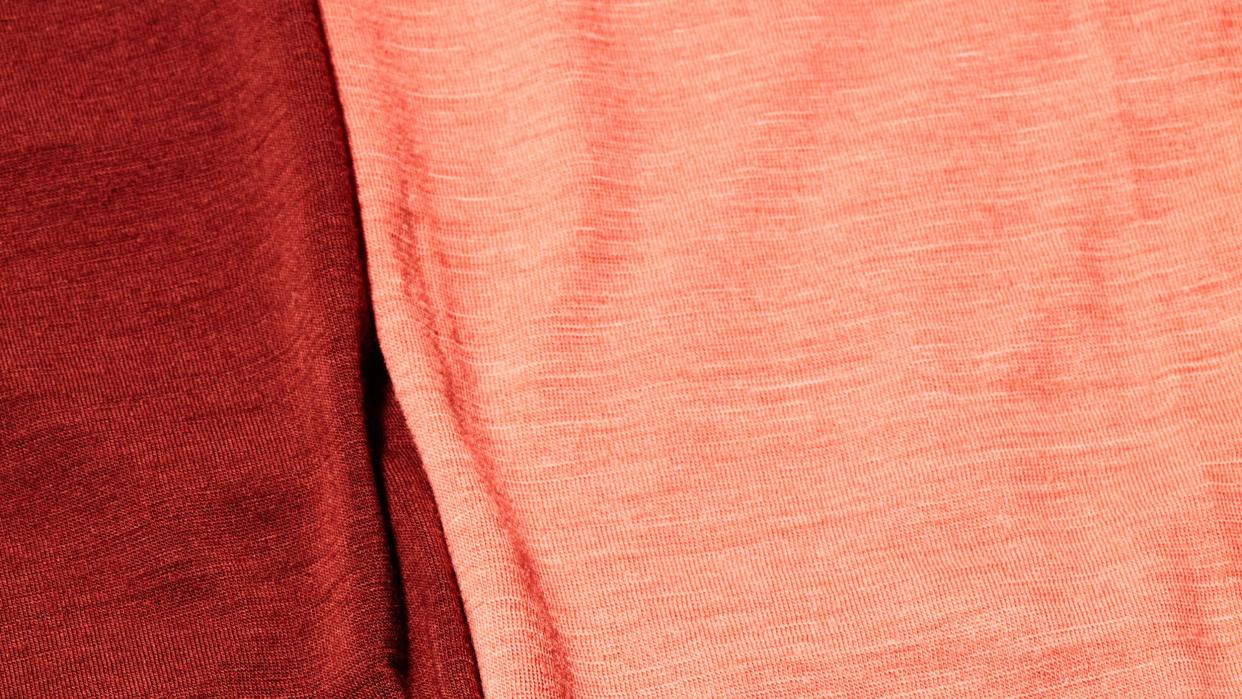
"Hearst Magazines and Yahoo may earn commission or revenue on some items through these links."
While shopping for activewear, you’ll undoubtedly see plenty of marketing copy touting the benefits of both natural and synthetic materials. Both have benefits and drawbacks, and many “natural” garments incorporate synthetic fibers to optimize the best properties of both.
If you’re planning on activities that are rough on your gear—anything from squeezing between tight rock walls to wearing a backpack for long periods of time—a natural fabric blended with synthetic fibers is likely your best bet. It’s more sustainable than all-synthetics, it lasts longer, and it does a better job of staving off odors over time.
But determining which natural fiber is best for your activewear—and the percentage of blended synthetics—isn’t as straightforward as you might think. These days, in addition to industry standard merino wool, yak and alpaca wools are also popular choices for their performance properties and sustainability.
Here, we cover the blends that work best for performance wear and recommend a few base layers made of each fiber, and spoke with industry experts to understand what each of these materials can bring to your gear.
If you’re looking to expand your natural fabric activewear wardrobe even further, you can get accessories, mid-layers, and even insulating fill alternatives made with merino, alpaca, and yak.
[table-of-contents] stripped
Why Mix Wool With Synthetic Fibers?
Synthetics have an edge when it comes to cost effectiveness and durability. These materials—particularly polyester and nylon—have impressive abrasion resistance and are treated for moisture wicking and odor resistance. Yet compared to natural fibers, synthetics are arguably stinkier after extended use. And, synthetics have proven to be harmful for the environment in both the treatment process and manufacturing.
“Synthetics use fossil fuels and have a lot of toxic contaminants, additives, dyes, and finishes,” says Alden Wicker, journalist and founder of EcoCult, an independent outlet dedicated to covering sustainability in the fashion industry. “They’re not biodegradable, and they come from factories that pollute the air, water, and surrounding communities.”
Wool, on the other hand, is more environmentally friendly because it comes from a renewable source. It’s biodegradable, and it doesn’t require the same level of chemical treatments—plus it’s naturally thermoregulating and odor resistant. But wool and other natural fibers are more delicate (and more expensive) than synthetics, so brands incorporate synthetic fibers to increase the activewear’s longevity.
Blends are also typically more comfortable to wear. Sheep’s wool is warm, for instance, but it can feel relatively scratchy and doesn’t have much stretch, so adding nylon or polyester to something like a beanie or a base layer makes the fabric softer against the skin.
What’s the Difference Between Merino, Alpaca, and Yak Wool?
Merino is the most common natural animal fiber in the performance wool market, but alpaca and (to a lesser extent) yak wools are increasing in popularity. All three types of wool perform similarly and are naturally porous. This means they absorb moisture, regulate body temperature, and maintain enough breathability to eliminate damp, bacteria-friendly environments, keeping the clothes (and us) fresher longer.
The price difference between merino, alpaca, and yak is related to sourcing, processing, and the percentage of natural fiber in the garments. Sheep farming is more accessible than alpaca and yak sourcing. As such, activewear made with merino spans the widest price point, with more affordable options. Alpaca is right in the middle, and yak—the most difficult to source and spin—is the least common, with the limited items and fewer brands utilizing the fiber.
There’s also Nuyarn, a relatively new processing method where wool fibers are drafted along a solid filament instead of the traditional process of twisting them. Nuyarn is used by dozens of brands across the outdoor gear and fashion industries because it offers loftier insulation with a higher abrasion resistance, bringing natural fibers closer to the abrasion-resistant properties of synthetics.
Merino Wool: Benefits and Drawbacks
Thanks to its comfort, versatility, and abundance, merino is the most common natural animal fiber in performance wear.
“Merino has more versatility than other natural animal fibers,” says Emily Walzer, editor-at-large for Textile Insight Magazine. “It has incredible warmth and durability, and can be spun very thin for everything from a base layer to outerwear. If I was going camping, I’d want merino. It’s just sturdier [than other natural animal fibers].”
Like alpaca and yak, merino is thermoregulating, which means it reacts to changes in body temperature and the environment to maintain a comfortable microclimate, insulating in the cold and managing heat and moisture in warm conditions.
“Merino wool is a semi-hollow protein fiber that traps air, water, and odorous compounds inside, releasing them into the air over time,” Wicker says. “Unlike synthetics, which trap water and bacteria, wool allows for the passage of air and dries quickly, making it a healthy choice for socks, underwear, and outdoor activity base layers.”
This is why you’ll notice odor build-up on your synthetic gear after a while that doesn’t go away even when you wash it—that won’t happen with merino.
Merino has an edge over alpaca and yak in terms of durability, thanks to longer strands that don’t break as easily during the spinning process. This also gives it more versatility in yarn weight, resulting in a wider range of garments—think everything from merino-blend sun shirts to heavyweight layers—for a variety of activities and conditions. For us, this makes merino an obvious choice for everything from stink-resistance during hot runs to base layers for winter sports.
And if you have any comfort concerns about natural fibers, the days of itchy wool are behind us. “What people often associate as a wool allergy is actually an unpleasant sensation from thick, short- fibered wool against the skin,” says Sue Jesch, Smartwool’s director of design. “Merino fibers are so long and thin they actually blend into each other against your skin.”
Check the label to see exactly how much merino is in the garment you’re buying—you might be surprised to see it’s often less than 50 percent. Since natural fibers are less durable than synthetics, the wool fibers are often wrapped around long, unbroken synthetic strands for structure, which also helps bring the cost down and can lighten up breezier layers.
The ideal percentage of merino depends on your activity and budget. Less expensive options often have more synthetic, and gear that necessitates betterabrasion-resistance (a.k.a., anything used as an outer layer) will also utilize more synthetic. If you’re trying to get the most out of the natural properties of merino, look for clothes with at least 70 percent merino.
Wicker does note that merino can have similar environmental concerns as leather, including land use, pesticides, biodiversity loss, water consumption, and high emissions. While merino doesn’t use the same chemicals as synthetics, this is something to keep in mind if you’re trying to be as eco-conscious as possible when shopping.
Merino Wool Base Layers
Intraknit Thermal Merino Quarter-Zip
Material: 52% merino, 46% polyester, 2% elastane
Smartwool’s Intraknit line is knit in a round, which means it doesn’t have multiple sections to piece together—and the fit is 3D mapped (thinner around the armpits, for example) and articulated (extra room at the elbows, for instance). This makes for a seamless shirt as well as less scrap waste. This is a great mid-weight merino top for cool-weather activities like hiking or fishing.

Intraknit Thermal Merino Quarter-Zip
rei.com
$69.83
Lana Merino Wool Hoodie
Material: 87% merino, 13% nylon
This high-percentage wool shirt feels light and airy thanks to the ultra-fine yarn and breezy fit. It has articulated sleeves and shoulders for a full range of motion, and the hood serves as both sun protection and light insulation. The shirt only weighs six ounces and packs down small, but packs a punch of warmth as a base layer.
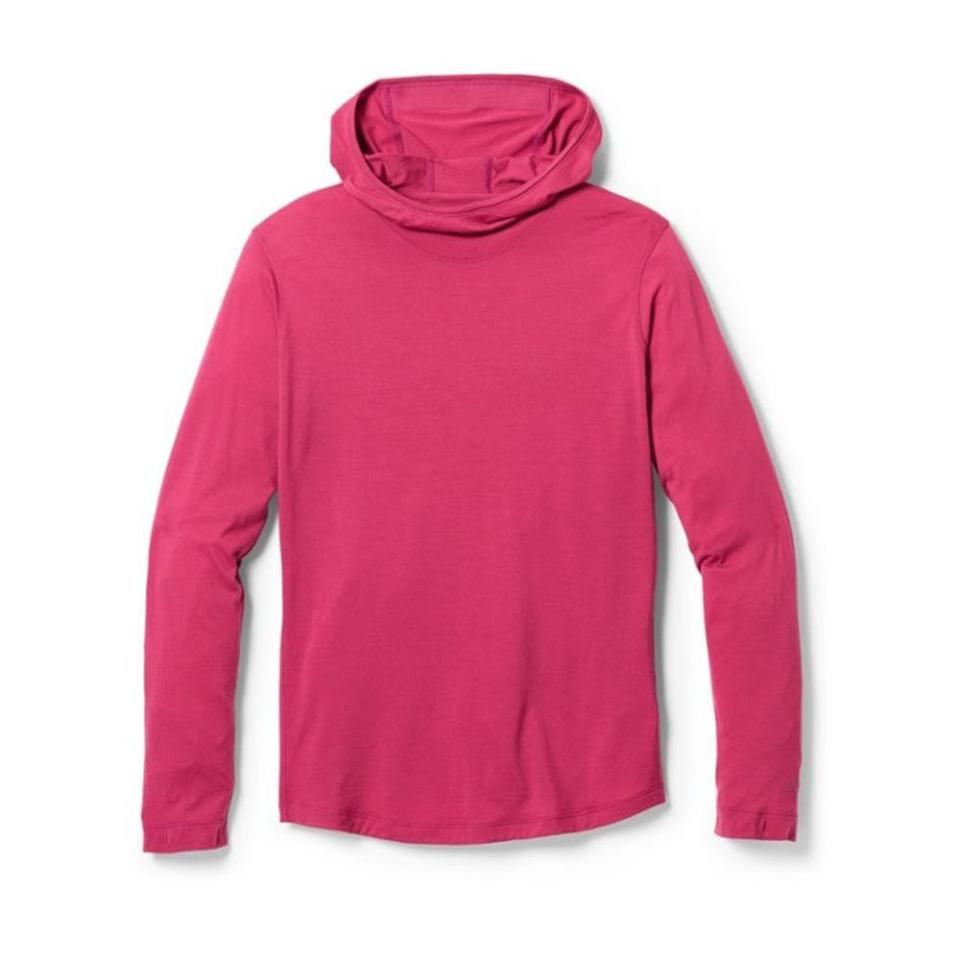
Lana Merino Wool Hoodie
rei.com
$120.00
Merino 185 Long-Sleeve
Material: 100% merino
This medium-weight crewneck exclusively uses merino wool, spun finely for an airy feel that still insulates while breathing and wicking sweat. This is a fantastic do-it-all base layer, with an easy-to-layer design and a scoop neck that doesn’t feel constricting when you pile on more layers.
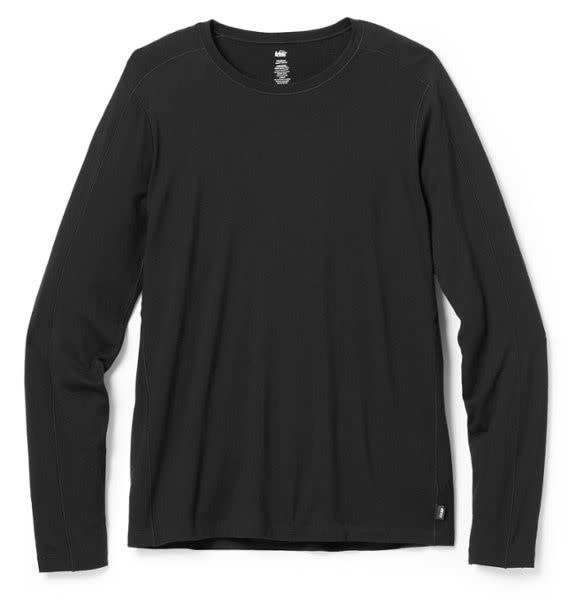
Merino 185 Long-Sleeve
rei.com
$39.83
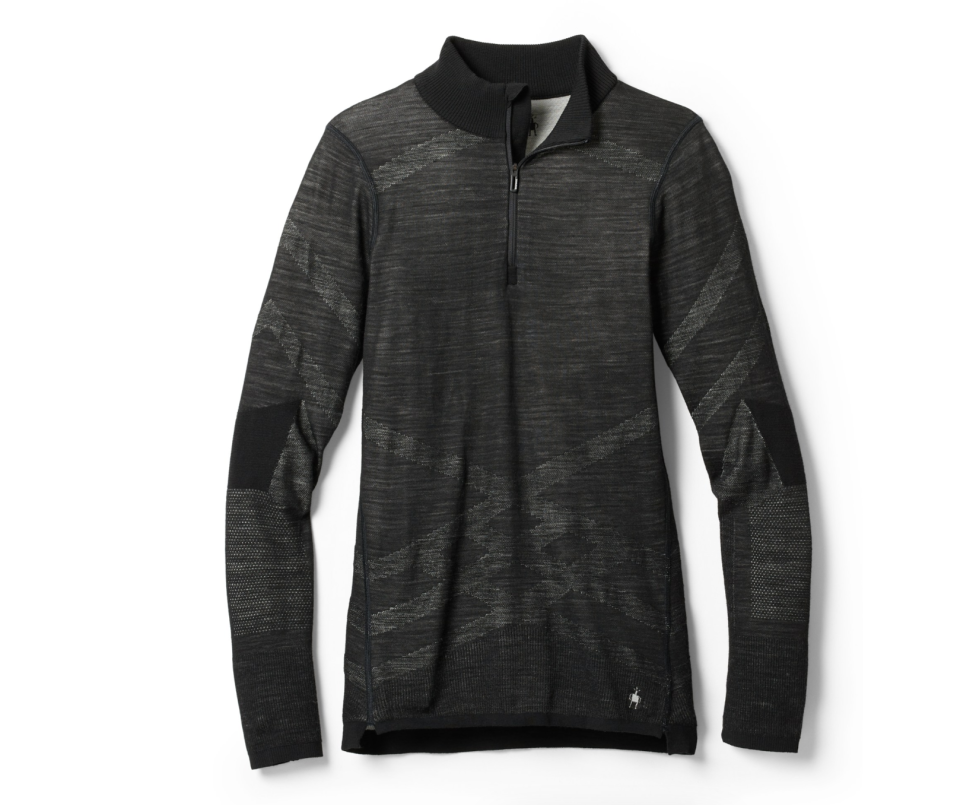
Intraknit Thermal Merino Quarter-Zip Base Layer Top
$69.83
Alpaca Wool: Benefits and Drawbacks
While alpaca is less common than merino, it’s a great alternative wool source with environmentally sound farming and sourcing. Performance-wise, one of the biggest benefits alpaca has over merino is a higher warmth-to-weight ratio.
“The alpaca fibers themselves are completely hollow, trapping air with a higher insulating power,” Walzer says. So, while alpaca and merino are both good insulators, sheep’s wool contains pockets of air compared to alpaca’s hollow fibers, giving alpaca the edge in warmth without losing breathability.
Alpaca is also highly hydrophobic, which helps the clothes stay dryer for longer. While this is the case with all wicking fibers, alpaca does a particularly good job of releasing the vapor and allowing the garment to feel dry to the touch.
“Alpaca’s hydrophobic fibers still wick moisture, but the water vapor isn’t actually going into the fiber,” says Bonie Shupe, head of product for Packa, a TKTK brand[ Was awk as written] Instead, alpaca wicks moisture through the openings within the material, allowing it to evaporate instead of being held within the fibers. This makes it a good option for taking on extended treks (like backpacking or bike touring) when conditions are iffy and you need every layer to stay as dry as possible and dry fast when it does get wet.
Alpaca sourcing can be trickier than merino, though—there are fewer alpaca farms than sheep farms—and the fiber itself is less durable than synthetic or merino. Spinning alpaca wool into yarn takes a specific kind of technology, and it can break apart more easily than merino, making it less abrasion-resistant. Keep this in mind when deciding where to wear it. We recommend avoiding alpaca gear for hiking on overgrown trails, climbing, or any adventure where it could get snagged or rub against rough rocks.
Like other natural fibers, alpaca is often blended with other materials. “You often see synthetic blends with socks, especially in areas of high friction,” says Walzer. “It also helps bring the price of apparel down without sacrificing performance too much.”
The two alpaca apparel companies I spoke with—Appalachian Gear Company and Paka—stressed the importance of their wool sourcing, using traceable materials, and working closely with the alpaqueros and other alpaca farmers. Wicker has also spoken highly of the environmental conscientiousness of alpaca wool.
Alpaca Wool Base Layers
8020 Alpaca Long Sleeve
Material: 80% alpaca, 20% Tencel
My first introduction to alpaca was through the Appalachian Gear Company All-Paca Hoodie, a popular mid-layer for thru-hikers. I wore it nearly every day of my 500-mile Colorado Trail hike, and it dried fast, wicked moisture, and was quite warm for the weight. This base layer is like a lightened version of the hoodie, blending alpaca with Tencel, a fiber made from wood pulp that helps keep this base lighter and more streamlined for layering. Because this top is made from all natural fibers, I recommend wearing it in places where you don’t have to worry about abrasion.
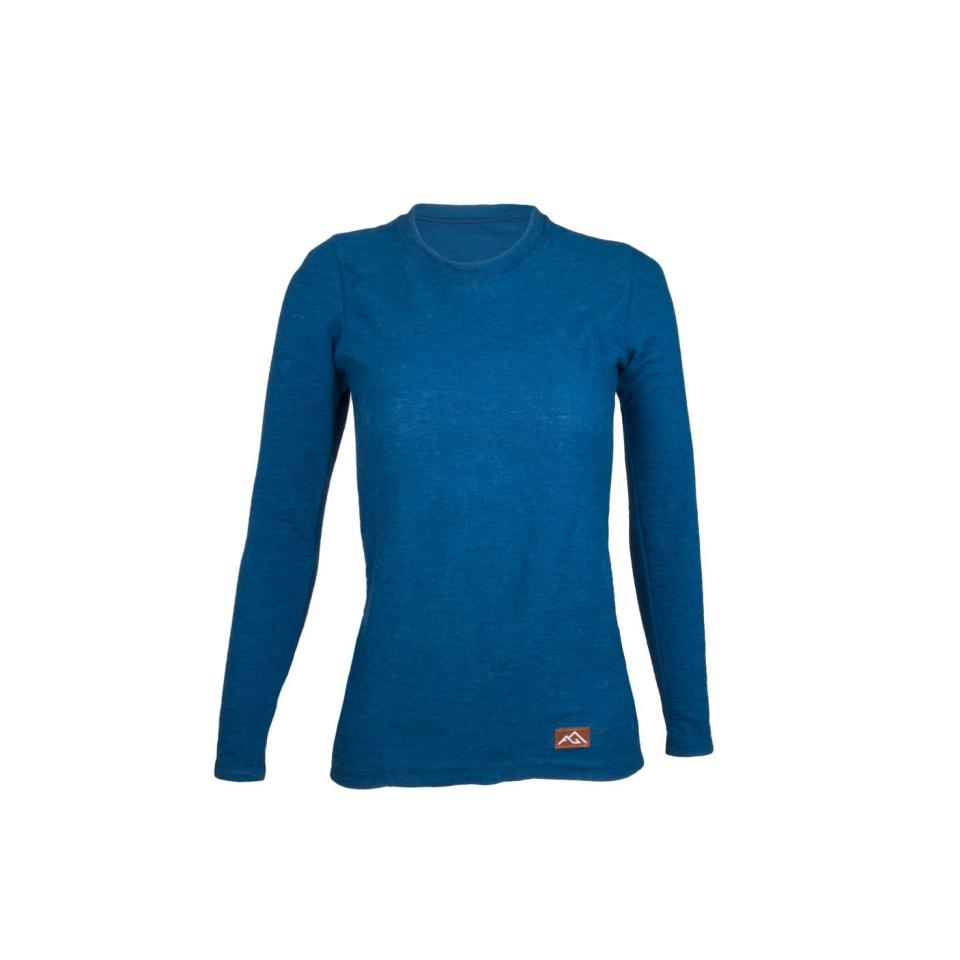
8020 Alpaca Long Sleeve
appalachiangearcompany.com
$102.00
The Ultralight Crew
Material: 65% alpaca, 35% nylon
This brushed-feeling base layer is one of the softest natural-fiber shirts I own. The recycled nylon helps with structure and durability, and the alpaca fibers are extremely fine. It also has a longer hemline, which I appreciate when I’m wearing a pack, though it’s not as close a fit as other base-layer type shirts.
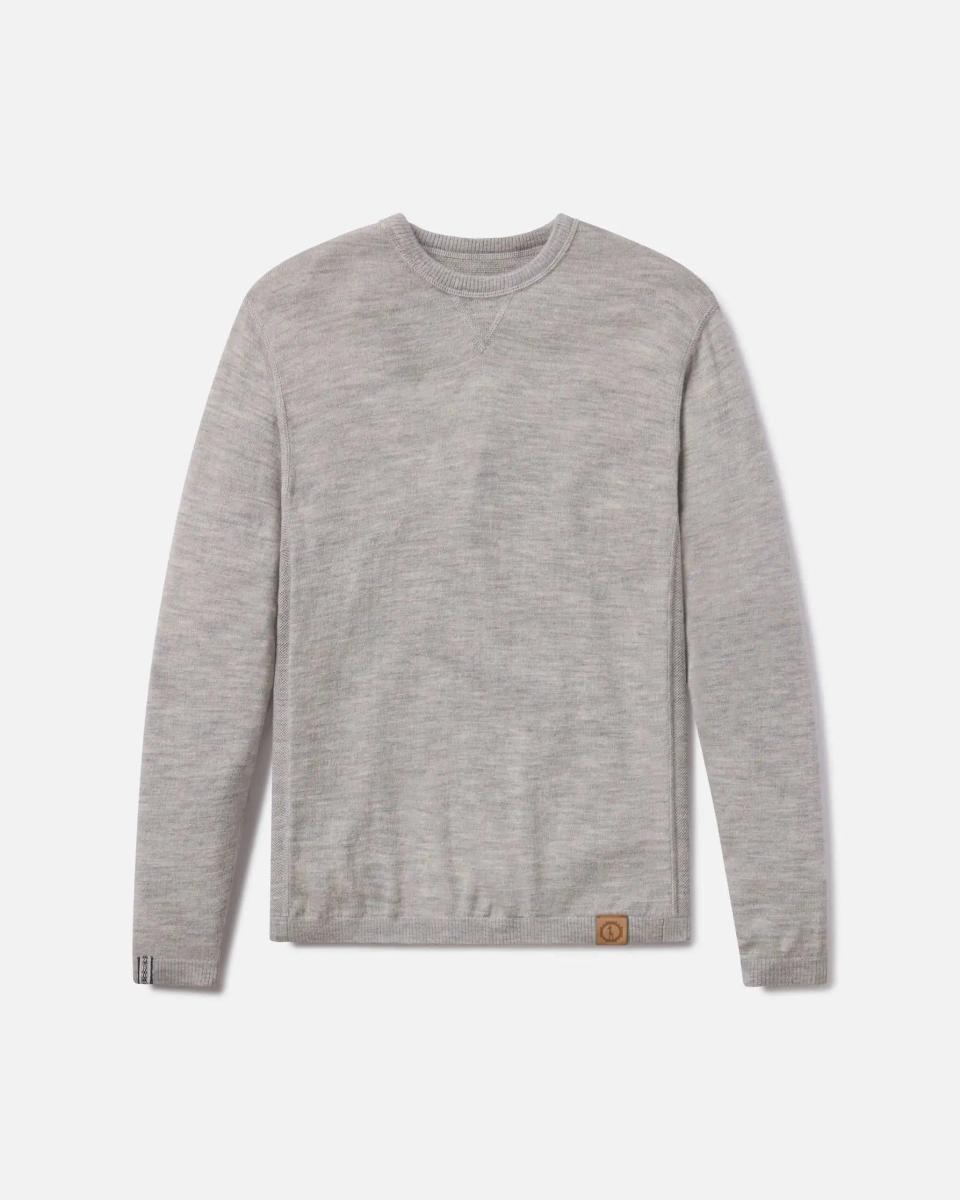
The Ultralight Crew
pakaapparel.com
$139.00
160 Ultralight Alpaca Wool Long-Sleeve Base Layer Shirt
Material: 100% alpaca
This full alpaca half-zip is super stretchy, built for layering, and feels nice next to skin. Made from very thin yarn, this has excellent durability and shape-holding, and is a great all-around layer when you don’t want something bulky but need more insulation than a lightweight base. This layer isn’t as soft as finer knits, but it does soften up after a few washes.
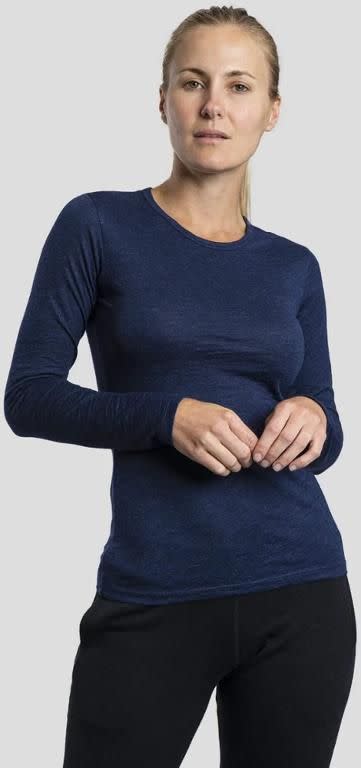
160 Ultralight Alpaca Wool Long-Sleeve Base Layer Shirt
rei.com
$85.00
Yak Wool: Benefits and Drawbacks
Like merino and alpaca, yak wool is thermoregulating, adapting to your body’s temperature and providing similar benefits for humans as it does for the animals it comes from. Each spring, yaks shed their fine layer of underwool, and those fibers are used by apparel companies for a similar performance wool knit as alpaca or merino, albeit with a higher warmth-to-weight ratio, per noted independent tests.
The wool is incredibly warm, with a hollow, fine construction that allows more air to become trapped within the fibers—the same function that allows yaks to thrive in extreme conditions at altitudes up to 20,000 feet. For this reason, yak wool is a great option for insulating mid-layers that stay warm without bulk, but unless it’s blended with a high percentage of additional fibers, it doesn’t have the same variation in layer weight as merino, making it less versatile for warm-weather layers.
There are fewer options and material weights available for yak wool, but it’s a solid choice if you’re looking for a high warmth-to-weight ratio for cold-weather outings. It’s important to note that most yak wool performance apparel is a blend of fibers, combining yak with merino, bamboo, polyester, or hemp for cost effectiveness and durability. This allows a wider range of material weights, but the wool percentage is often lower.
While there are several lifestyle brands incorporating yak fibers, this type of wool is the least common, and even more unusual in the activewear space. In our research, Kora was the only prominent brand using it for performance apparel. This is partially due to the challenges of sourcing it from yaks on the Tibetan plateau, which drives the price up and makes it less appealing as an ingredient fiber compared to merino or alpaca.
“Yak wool is expensive and harder to spin,” says Walzer, adding that because it’s a short-staple fiber, it’s harder to process. “Long filament fiber is softer and more pliable, and short-staple is rougher and breaks apart more. You need expert spinners, which drives the cost up.”
Yak wool is a great option for the sustainably minded, though. The sourcing comes from collecting shed fibers, so the animals can live naturally in their habitat. It also encourages brands to employ locals to collect the fiber. This leaves less of a mark on the landscape compared to large-scale farming, but since yak wool is harder to source and spin, most garments are a blend of other natural fibers or synthetics.
Yak Wool Base Layers
Yushu Base Layer
Material: 60% yak wool, 40% merino
This winter-ready, fully natural base layer was my second introduction to yak, after wearing a full yak-wool base layer that felt itchy. This updated top has all of the performance of the original layer, but is easier to wear and has been a terrific addition to my downhill ski setup. It fits well enough to not bunch under my other layers and offers plenty of warmth on cold runs. This top does have reinforced paneling on high-abrasion areas, which is helpful for clothes without any synthetic blends.
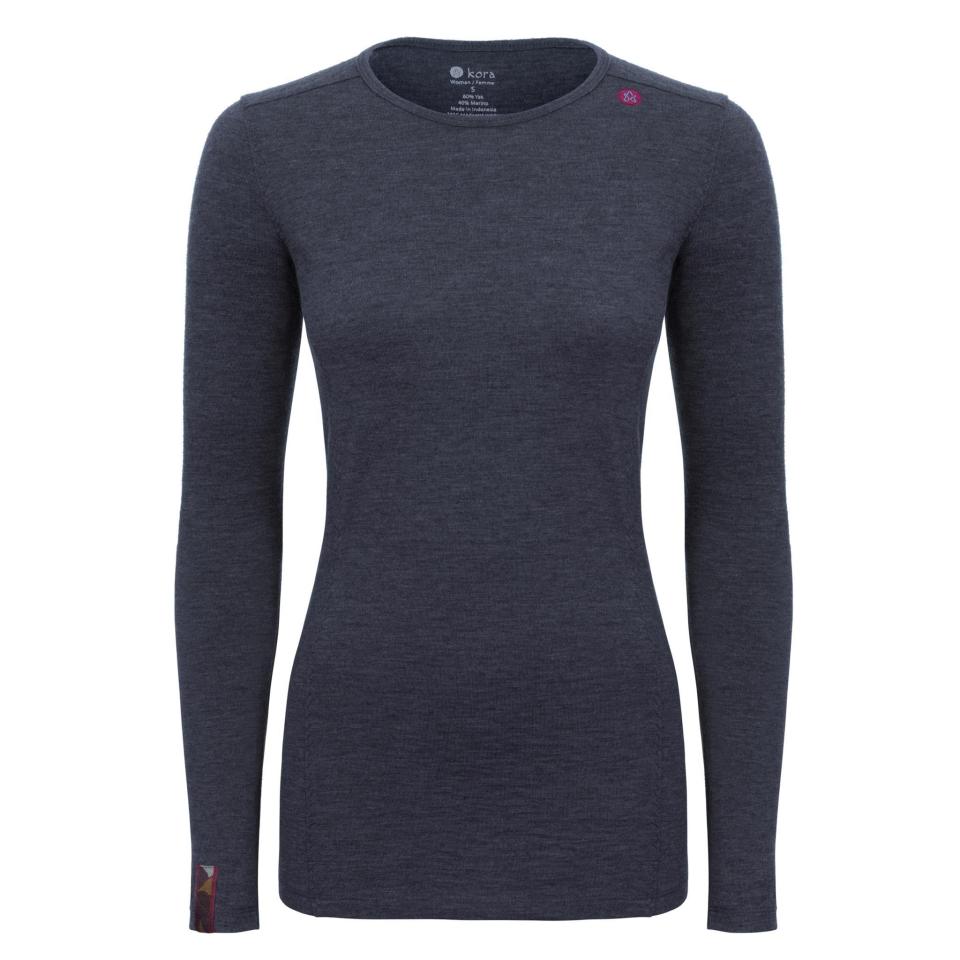
Yushu Base Layer
koraoutdoor.com
$150.00
Women’s Yardang Yak Wool Hoodie
Material: 60% yak wool, 40% merino
This hooded base layer actually has more merino than yak wool, combining the fibers for a versatile top that can be worn on its own or as part of a system. It feels somewhat softer than the Yushu layer, and dries quickly if you manage to sweat it out. I also love the details like a helmet-ready hood and thumb loops, as well as the longer length that keeps it from riding up under a pack.
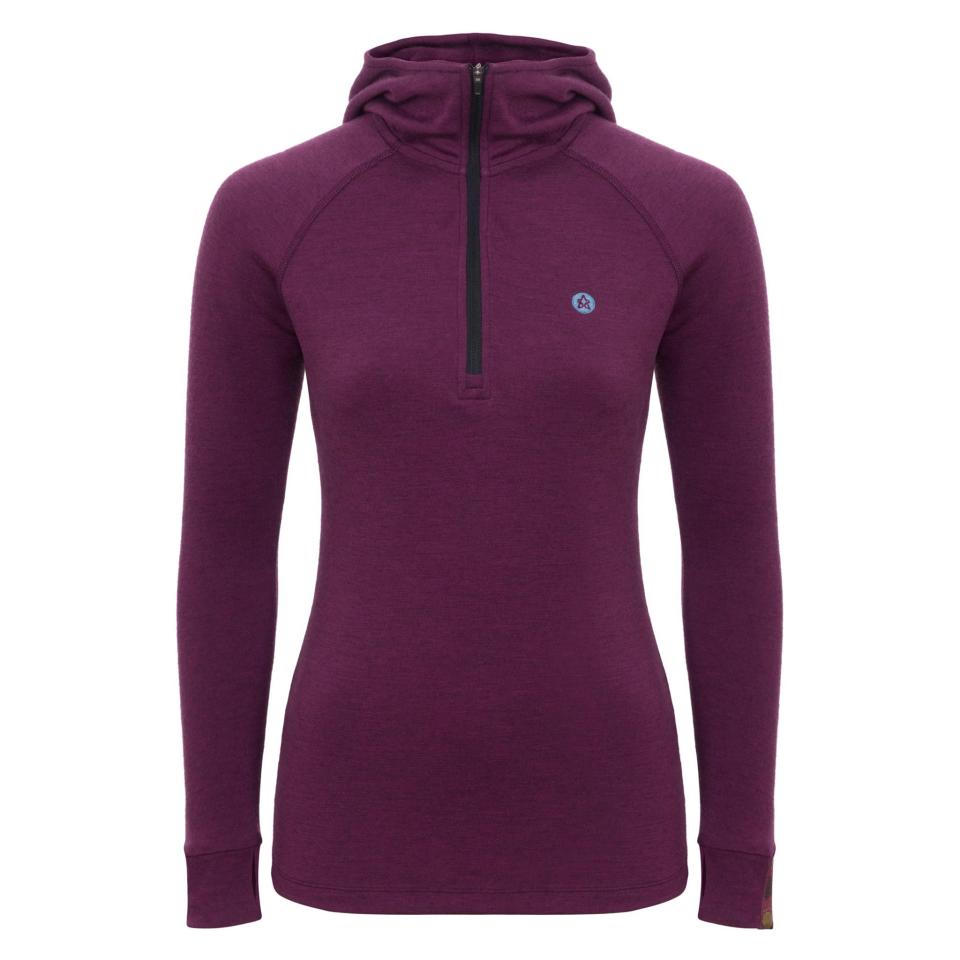
Women’s Yardang Yak Wool Hoodie
koraoutdoor.com
$170.00
What’s the Deal With Nuyarn?
Nuyarn is a relatively new method of processing natural fibers, resulting in a loftier feel that can increase durability and moisture management.
Nuyarn was founded in 2000, but didn’t make its way into the mainstream outdoor apparel market until 2013 when The Merino Company purchased the brand and processing technology. While standard methods (ringspun and corespun) twist the wool into a rope-like structure, Nuyarn processes the wool along a solid filament that allows it to be utilized in a loftier state. Essentially, twisted fibers have more compression, which results in a less lofty, heavier fabric that can strain the fiber. Nuyarn uses a special spinning technology to produce an ultra-fine, twist-free yarn that they say increases moisture management, stretch, softness, and durability.
This process also emphasizes sustainability efforts during manufacturing, using about 30 percent less raw materials thanks to higher thermal retention of the loftier yarn. The company’s 2022 Martindale abrasion testing also showed higher durability, with 150 grams of Nuyarn breaking down at 123,333 rubs, compared to a standard ringspun wool breaking down at 14,000 rubs. This higher durability could conceivably help reduce material waste and garment replacement.
While Nuyarn is primarily used for merino, it can also be made with yak and alpaca wool, and it’s been adapted to work with the often-discarded strong wool (the coarsest wool fibers) that have historically been thrown away or only used for interior textiles like rugs and upholstery.
“This [discarded wool] is so durable it even outlasted some of the industry’s leading synthetic textiles in abrasion tests,” says Wynne, [who is this???] telling me they’re currently looking to integrate this coarse wool into high-abrasion areas of performance garments and packs.
Nuyarn Base Layers
Woolies Pro Tech Crew
Material: 85% merino, 15% nylon
This super stretchy top is my go-to for everything from wearing under overalls to going for a run. I love the standard fit which doesn’t feel too tight or too baggy, and the flatlock seams don’t rub under a pack or feel twisted under layers. I’ve found it to be quite abrasion resistant, and it has thumb holes. What more could you ask for?
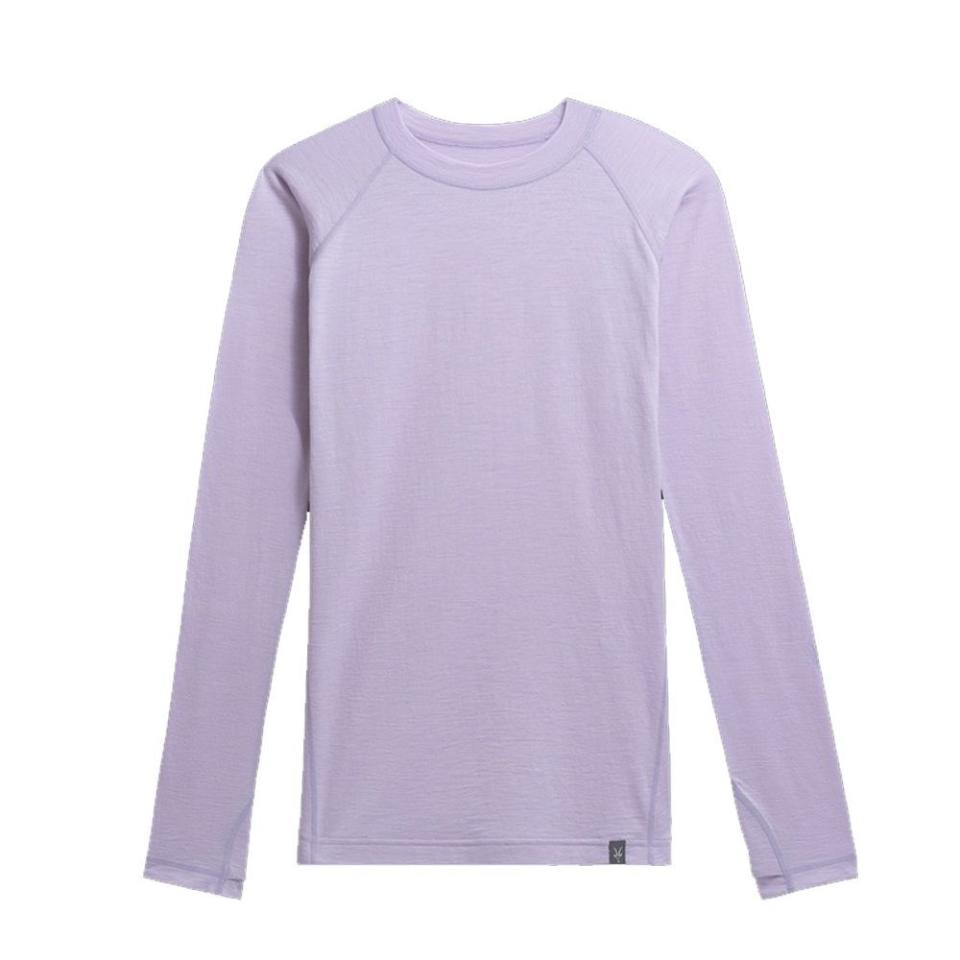
Woolies Pro Tech Crew
ibex.com
$115.00
Flatiron 185 Base Layer Crew Top
Material: 91% merino, 9% nylon
This packable top packs a punch in warmth, with double-cuffed sleeves that don’t get pulled up under other layers, mesh venting under the arms, and a long hemline that layers well as part of a winter system. The Nuyarn processing keeps it light but warm, though I have found it to fit a little tighter than other base layers. If you’re between sizes, consider sizing up.
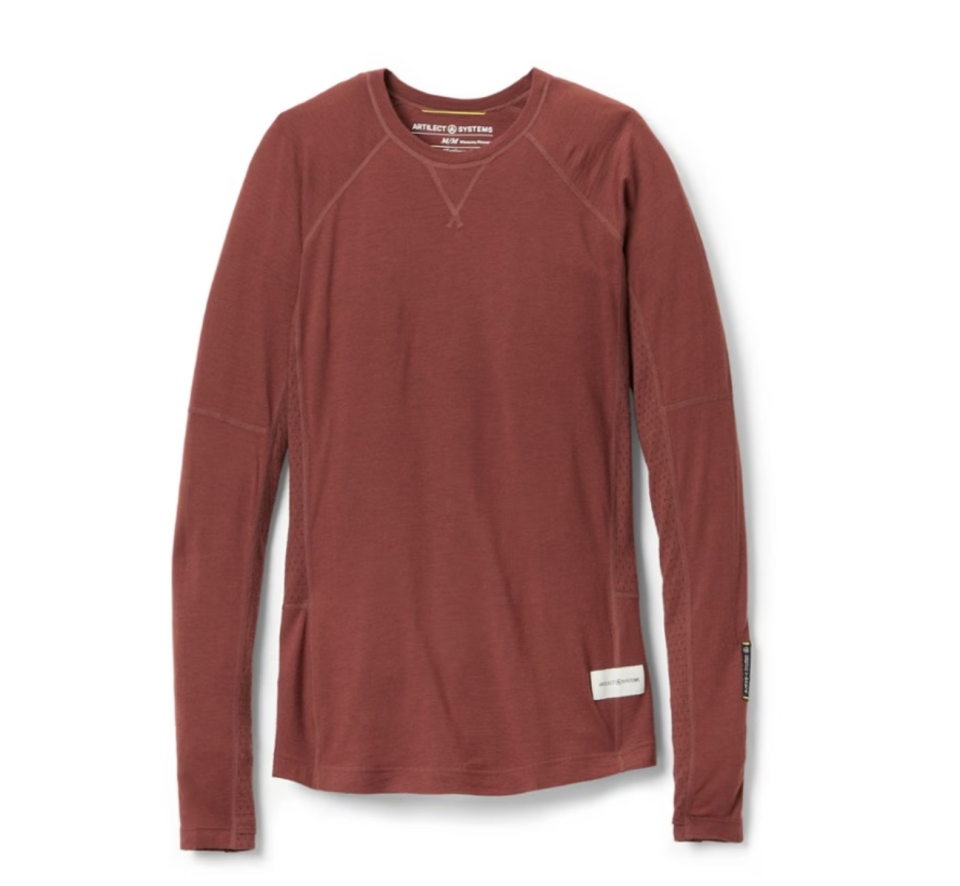
Flatiron 185 Base Layer Crew Top
rei.com
$69.83
Tern Ultralight Merino Hoodie
Material: 58% merino, 42% nylon
Made with very fine merino fiber, this lightweight hoodie works as both a sun hoodie and a cool-weather layer. It’s super simple—you won’t find zippers, thumb holes, or pockets, but it’s sleek and streamlined with a lofty feeling from the Nuyarn. Be aware this can get caught and pulled pretty easily, so I try to wear it in places where it’s not in danger of getting snagged on rough surfaces.
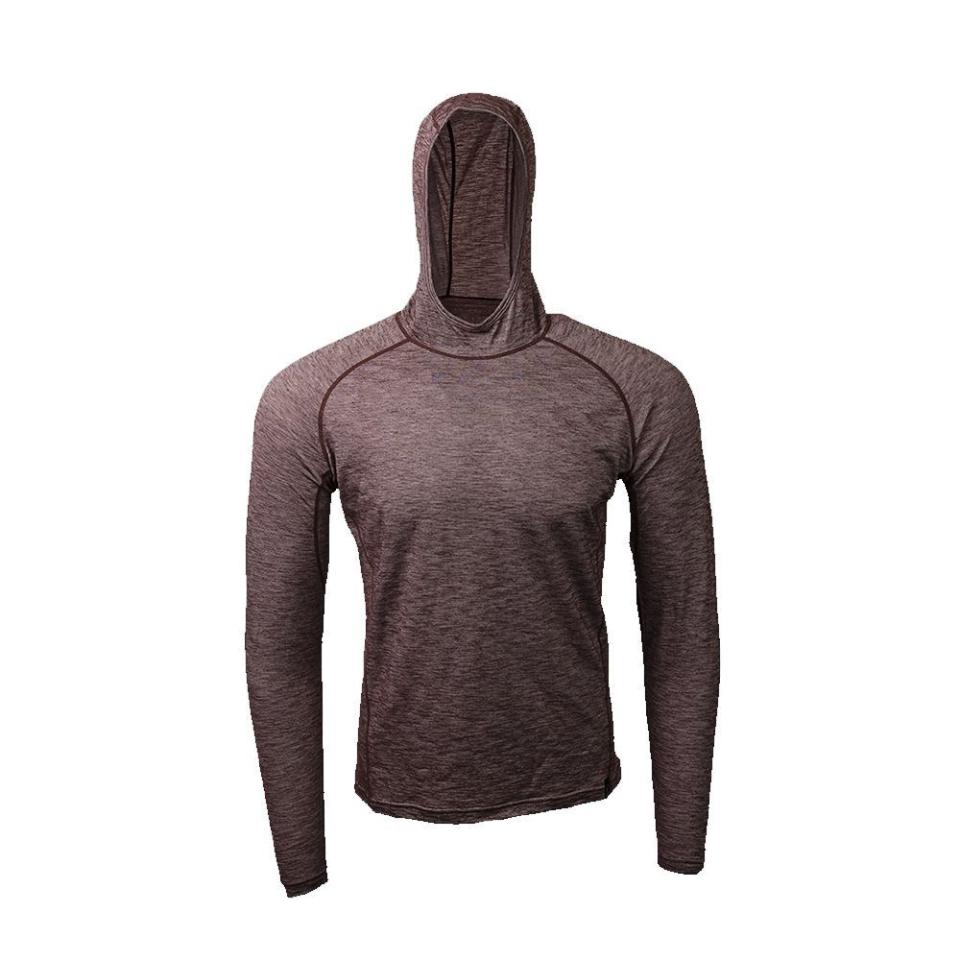
Tern Ultralight Merino Hoodie
outdoorvitals.com
$76.47
You Might Also Like

